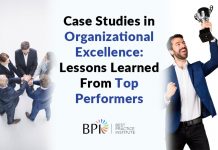And now some specific metric recommendations. This section lists areas where baseball-like talent metrics that should be developed in the corporate world. They include:
Recruiting
- The factors in an algorithm (i.e. elements in the equation) that predict the future on-the-job performance and retention of a candidate.
- A metric that predicts where the level of competition for external top talent will be 6 to 12 months in the future?
- A “quality of hire metric” that demonstrates that the hiring process is producing above-average performers.
Retention
- An algorithm that calculates the dollar value associated with the loss of a key employee.
- A risk metric that shows which employees have a high probability of quitting within six months?
- A metric that predicts what the turnover rate of each manager will be in 6 – 12 months into the future? And the cost of that turnover to the organization.
Development
- An algorithm which reveals whether recruiting, internal development, compensation or good coaching has the most impact on team success.
- An algorithm that successfully identifies leadership potential in team members with less than two years at the firm.
- An algorithm that predicts whether an individual player will improve after training.
Productivity/Innovation
- A metric that accurately predicts a downturn in performance in an employee or in a sub-team.
- A metrics process that identifies the job-related factors that increase employee productivity and innovation.
- A metric that accurately identifies innovators among candidates and recent hires.
Compensation
- An algorithm which shows which reward and recognition factors have the greatest impact on improving employee productivity.
- A metric which accurately determines which employees are under or overpaid.
- Predicting into the future how many years an individual employee will remain productive and “worth their salary”.
Business case metrics
- Calculating the current and future ROI of each major talent management program.
- Calculating the increased dollar impact for each percentage increase in new hire on-the-job performance.
Dr. John Sullivan will be speaking about this and more at BPI’s TalentBall with the Texas Rangers in April. Joining Rangers’ top executives including GM Jon Daniels, their CFO, Head of Analytics, VP of HR and others, Dr. Sullivan will be bridging the gap between the successful Moneyball tactics and corporate talent and business results. Click here to register today for TalentBall.










